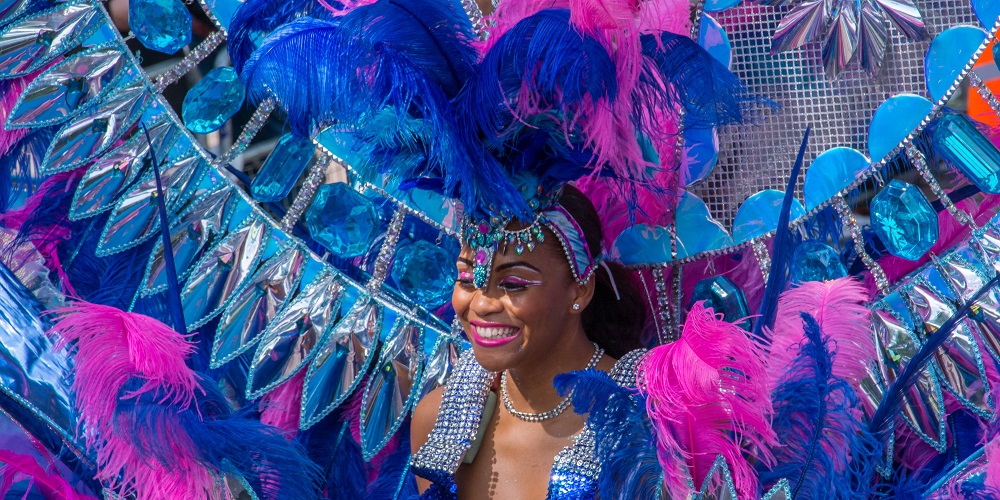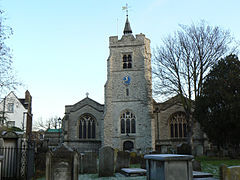Although our ‘manor’, as they say in all the best cockney gangster films, is most definitely London, there was an anniversary this week involving an American writer that I had to mention. - especially as he came to London for a while. Now, as you know, I love Americans. I’ve not met a bad ‘un yet. It’s interesting that since His Trumpness became boss of the good old US of A, there has been a huge rise in the sale of George Orwell’s dystopian novel, 1984. Shows you what a good bunch most of the Yanks are really. They've done a pretty good job of things since we left them to it in, ooo, what was it… 1776?
But joking aside, this week saw the 20th anniversary of the death of poet Allan Ginsberg. His first name was actually Irwin, but he obviously didn't like it, ‘cause he dropped it sharpish.
He was born on 3 June in 1926 and was one of the leading figures in what was the ‘Beat Generation’ in the 1950’s USA. And he became a leader of the counterculture that would follow.
Alan Ginsberg was born into a Jewish family in Newark, New Jersey, and grew up in nearby Paterson. As a young teenager, he began to write letters to The New York Times about political issues, such as World War II and workers' rights. While in high school, Ginsberg began reading Walt Whitman, inspired by his teacher's passionate reading. (We all need a good teacher, er? Thanks to Mr Hewitt of Wheelers Lane School, Birmingham. But that is for another time…!)
In 1943, Alan Ginsberg graduated from Eastside High School and briefly attended Montclair State College before entering Columbia University on a scholarship from the Young Men's Hebrew Association of Paterson. In 1945, he joined the Merchant Marines to earn money to continue his education at Columbia.
Young Al was no literary slouch! While at Columbia, he contributed to the Columbia Review literary journal, the Jesterhumour magazine, won the Woodberry Poetry Prize, served as president of the Philolexian Society (a literary and debate group), and joined the Boar's Head Poetry Society!
Ginsberg has stated that he considered the required freshman seminar to be his favourite course while at Columbia University. I'm not sure what that means, but I know why he liked whatever it was. Its subject was The Great Books and was taught by Lionel Trilling. Thrilling!
Alan vigorously opposed militarism, economic materialism and sexual repression. He was known as embodying various aspects of this counterculture, such as his views on drugs, hostility to bureaucracy and openness to Eastern religions. He was one of many influential American ‘Beat’ writers of his time which included famous contemporaries such as Jack Kerouac and William S. Burroughs.
Ginsberg is best known for his poem Howl, in which he denounced what he saw as the destructive forces of capitalism and conformity in the United States. Needless to say, in post war America, it caused a stir! In 1956, Howl was seized by San Francisco police and US Customs and in 1957, it attracted widespread publicity when it became the subject of an obscenity trial, as it described heterosexual and homosexual sex at a time when homosexual acts were a crime in every U.S. state.
Howl reflected Ginsberg's own homosexuality and his relationships with a number of men, including Peter Orlovsky, who he met in San Francisco and was to become his lifelong partner.
But another reason I love Americans, was the Judge in the Ginsberg obscenity case. Not only did the judge have a fantastically theatrical name - Clayton W. Horn! - but he ruled that Howl was not obscene. And what a brilliant summation from an ‘establishment’ figure so apparently derided by Ginsberg. Judge Horn said,
"Would there be any freedom of press or speech if one must reduce his vocabulary to vapid innocuous euphemisms?"
Way to go, Horn!
In 1957, Ginsberg surprised the literary world by abandoning San Francisco. After a spell in Morocco, he and Peter Orlovsky joined Gregory Corso in Paris. Corso introduced them to a shabby lodging house above a bar at 9 rue Gît-le-Coeur that was to become known as The Beat Hotel. They were soon joined by Burroughs and others. It was a productive, creative time for all of them. There, Ginsberg began his epic poem Kaddish, Corso composed Bomb and Marriage, and Burroughs (with help from Ginsberg and Corso) put together Naked Lunch from previous writings. This period was documented by the photographer Harold Chapman, who moved in at about the same time, and took pictures constantly of the residents of the "hotel" until it closed in 1963.
During 1962–3, Ginsberg and Orlovsky travelled extensively across India, living half a year at a time in Calcutta and Benares. During this time, he formed friendships with some of the prominent young Bengali poets of the time, including Shakti Chattopadhyay and Sunil Gangopadhyay. Ginsberg had several political connections in India; most notably Pupul Jayakar who helped him extend his stay in India when the authorities were eager to expel him.
Continuing his travels, in May 1965, Ginsberg finally arrived in London and offered to read anywhere for free. Good lad! Shortly after his arrival, he gave a reading at Better Books, which was described by Jeff Nuttall as "the first healing wind on a very parched collective mind.” Tom McGrath wrote: "This could well turn out to have been a very significant moment in the history of England – or at least in the history of English Poetry".
Soon after the bookshop reading, plans were hatched for the International Poetry Incarnation, which was held at the Royal Albert Hall in London on 11 June, 1965. The event attracted an audience of 7,000, who heard readings and live and tape performances by a wide variety of figures, including Ginsberg, Adrian Mitchell, Alexander Trocchi, Harry Fainlight, Anselm Hollo, Christopher Logue, George Macbeth, Gregory Corso, Lawrence Ferlinghetti, Michael Horovitz, Simon Vinkenoog, Spike Hawkins and Tom McGrath. The event was organized by Ginsberg's friend, the filmmaker Barbara Rubin.
Peter Whitehead documented the event on film and released it as Wholly Communion. A book featuring images from the film and some of the poems that were performed was also published under the same title by Lorrimer in the UK and Grove Press in the US. I've not seen the film yet, but it's on my must see list!
Alan returned to the USA and continued to form a bridge between the beat movement of the 1950s and the hippies of the 1960s, befriending, among others, Timothy Leary, Ken Kesey, and Bob Dylan.
Ginsberg's poetry was strongly influenced by Modernism (most importantly the American style of Modernism pioneered by William Carlos Williams), Romanticism (specifically William Blake and John Keats), the beat and cadence of jazz (specifically that of bop musicians such as Charlie Parker), and his Kagyu Buddhist practice and Jewish background. He considered himself to have inherited the visionary poetic mantle handed down from the English poet and artist William Blake - who spent almost his entire life in Soho and is a personal favourite - the American poet Walt Whitman and the Spanish poet Federico Garcia Lorca. The power of Ginsberg's verse, its searching, probing focus, its long and lilting lines, as well as its New World exuberance, all echo the continuity of inspiration that he claimed.
Using his fame as an international podium, Ginsberg spoke out on such controversial issues as the Vietnam War, gay rights (he listed his lifelong companion, Peter Orlovsky, as his spouse in his Who’s Who entry), and drugs (he was an early participant in Timothy Leary’s psilocybin and LSD experiments). At times, his opinions landed him in trouble: he was expelled from Cuba and Czechoslovakia in 1965 and, like many outspoken artists and activists, became the subject of a voluminous FBI dossier. His opinions and knowledge, however controversial, were highly solicited. He testified before Senate subcommittee hearings on drugs and his political essays were in constant demand. Accredited with coining the term “Flower Power”, Ginsberg became a figurehead of the global youth movement in the late 1960s.
Ginsberg continued to help his friends as much as he could, going so far as to give money to Herbert Huncke out of his own pocket, and housing a broke and drug addicted Harry Smith.
Alan Ginsberg gave his last public reading at Booksmith, a bookstore in the Haight Ashbury neighbourhood of San Francisco, a few months before his death in April, 1997.
He died surrounded by family and friends in his East Village loft in New York City, succumbing to liver cancer via complications of hepatitis. He was 70 years old.
Gregory Corso, Roy Lichtenstein, Patti Smith and others came by to pay their respects.
Alan Ginsberg is buried in his family plot in B'Nai Israel Cemetery in Newark, NJ. He was survived by his life-partner, Peter Orlovsky who died in 2010.
What a guy! I would loved to have met him. I guess the echoes of the New York Beats seem very close to the Verse of the Soho Shrieks!
And let's face it, any fan of Blake, is okay in my book!





 fame of the terrible fire at Grenfell Tower, the high-rise block of flats in North Kensington. It was the worst civilian fire in London since the Second World War. The burnt-out building is a horrible sight to behold. And the neighbourhood of North Kensington is also fairly unique. A poorer part of one of the richest areas of the UK, one of the best Pantomimes I ever saw was in Notting Hill. The handwritten programmes, groups of school children and community groups performing were off-set by cameo performances by some very famous actors and musicians who live in, or near the area. It was brilliant and democratic and everything a community should be.
fame of the terrible fire at Grenfell Tower, the high-rise block of flats in North Kensington. It was the worst civilian fire in London since the Second World War. The burnt-out building is a horrible sight to behold. And the neighbourhood of North Kensington is also fairly unique. A poorer part of one of the richest areas of the UK, one of the best Pantomimes I ever saw was in Notting Hill. The handwritten programmes, groups of school children and community groups performing were off-set by cameo performances by some very famous actors and musicians who live in, or near the area. It was brilliant and democratic and everything a community should be. 





